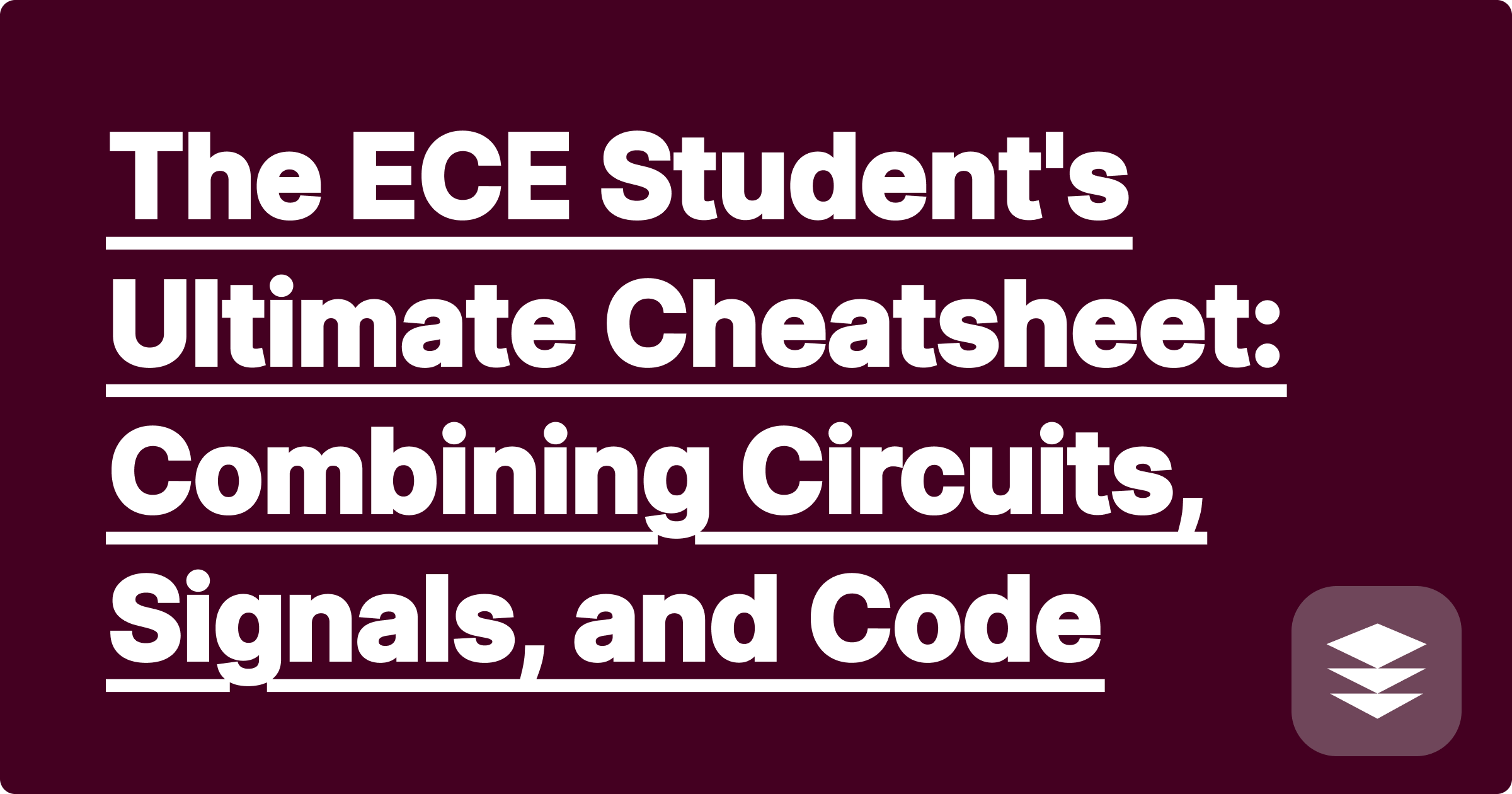
The Electrical and Computer Engineering (ECE) curriculum is famously broad. One day you're solving RLC circuits using differential equations. The next, you're analyzing signals in the frequency domain with Fourier transforms. The day after that, you're writing Verilog code to describe a digital state machine. Each class feels like a completely different universe with its own language, mathematics, and problem-solving techniques.
The problem comes at the end of the semester, or when you're preparing for a comprehensive exam like the FE Exam. How do you consolidate this fragmented knowledge? How do you create a single, cohesive ece study guide that connects the dots between these disparate subjects?
The answer lies in building a "master cheatsheet" that intelligently integrates your notes from every class. With an AI-powered tool like GPAI Cheatsheet, you can create the ultimate electrical engineering cheat sheet that combines analog circuits, digital logic, signal processing, and more.
The ECE curriculum is often taught in silos.
Your notes for each class live in separate folders and binders. The connections between them are rarely made explicit, and it's up to you to figure out how they relate.
GPAI Cheatsheet is the perfect tool for this task because it's designed to process and synthesize information from multiple, varied sources at once.
Here’s how you could structure your ultimate cheatsheet:
[Image: The GPAI Cheatsheet builder interface showing an organized document with clear H2 headings for "Analog Circuits," "Digital Logic," and "Signals & Systems," with relevant diagrams and formulas under each. Alt-text: An electrical engineering cheat sheet created by combining notes from multiple ECE classes.]
The true power of this master document is that it helps you see the connections you might have missed. You can place the Bode plot from your circuits class right next to the Laplace transform theory from your signals class, and suddenly the relationship between s in the transfer function and the frequency response becomes crystal clear. You can even ask the AI: "Explain how the binary logic from my digital design class is implemented using transistors from my microelectronics class."
[Ready to unify your ECE knowledge? Try GPAI Cheatsheet today. Upload all your notes from all your classes and build the master study guide you need for finals and beyond. Sign up now for 100 free credits.]
Circuit Analysis Made Simple: An AI Assistant for Nodal and Mesh Analysis
Understanding Electromagnetics: How AI Can Visualize Fields and Waves
Digital Logic Design: From Truth Tables to Karnaugh Maps with AI
Signals and Systems: How AI Can Help You with Fourier and Laplace Transforms
Your Guide to Semiconductor Physics: How AI Simplifies Band Diagrams
How to Write Verilog or VHDL Code Faster with an AI Assistant
Mastering Microelectronics: An AI Tool for Amplifier and Filter Design
The ECE Student's Ultimate Cheatsheet: Combining Circuits, Signals, and Code
Can AI Help Me with My PSpice / LTspice Simulation?
How to Prepare for the FE Electrical and Computer Exam with AI